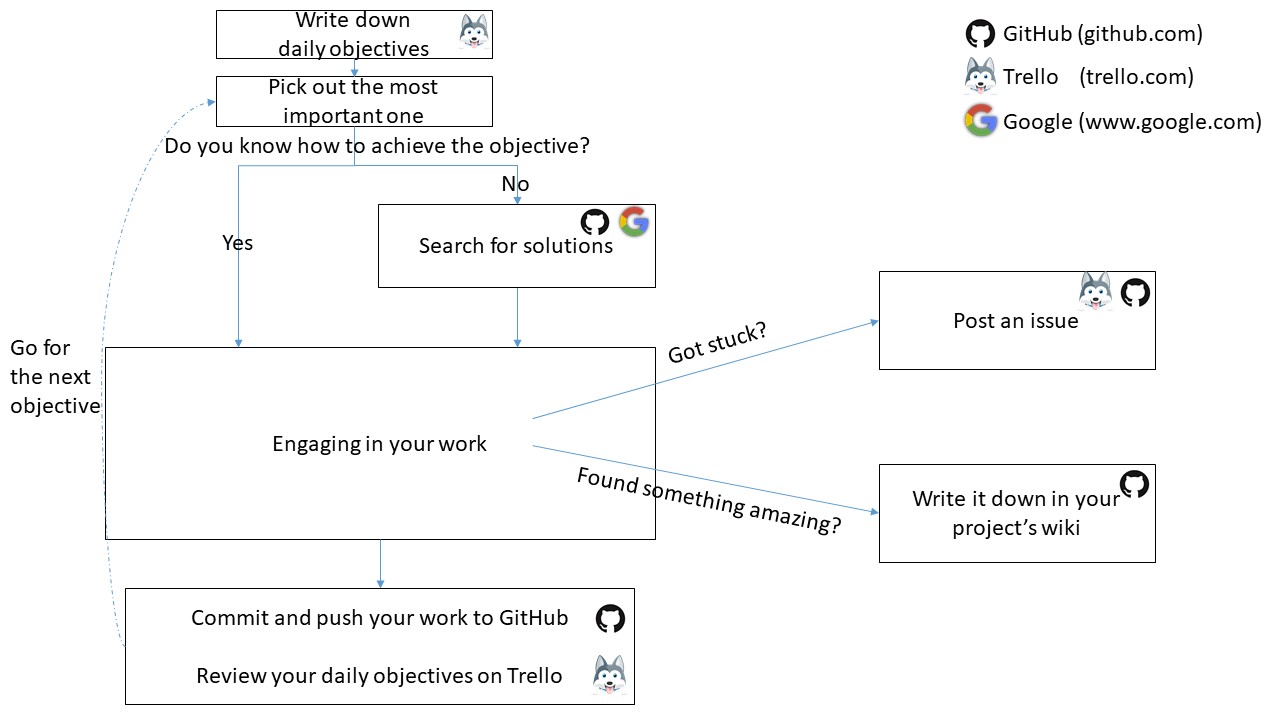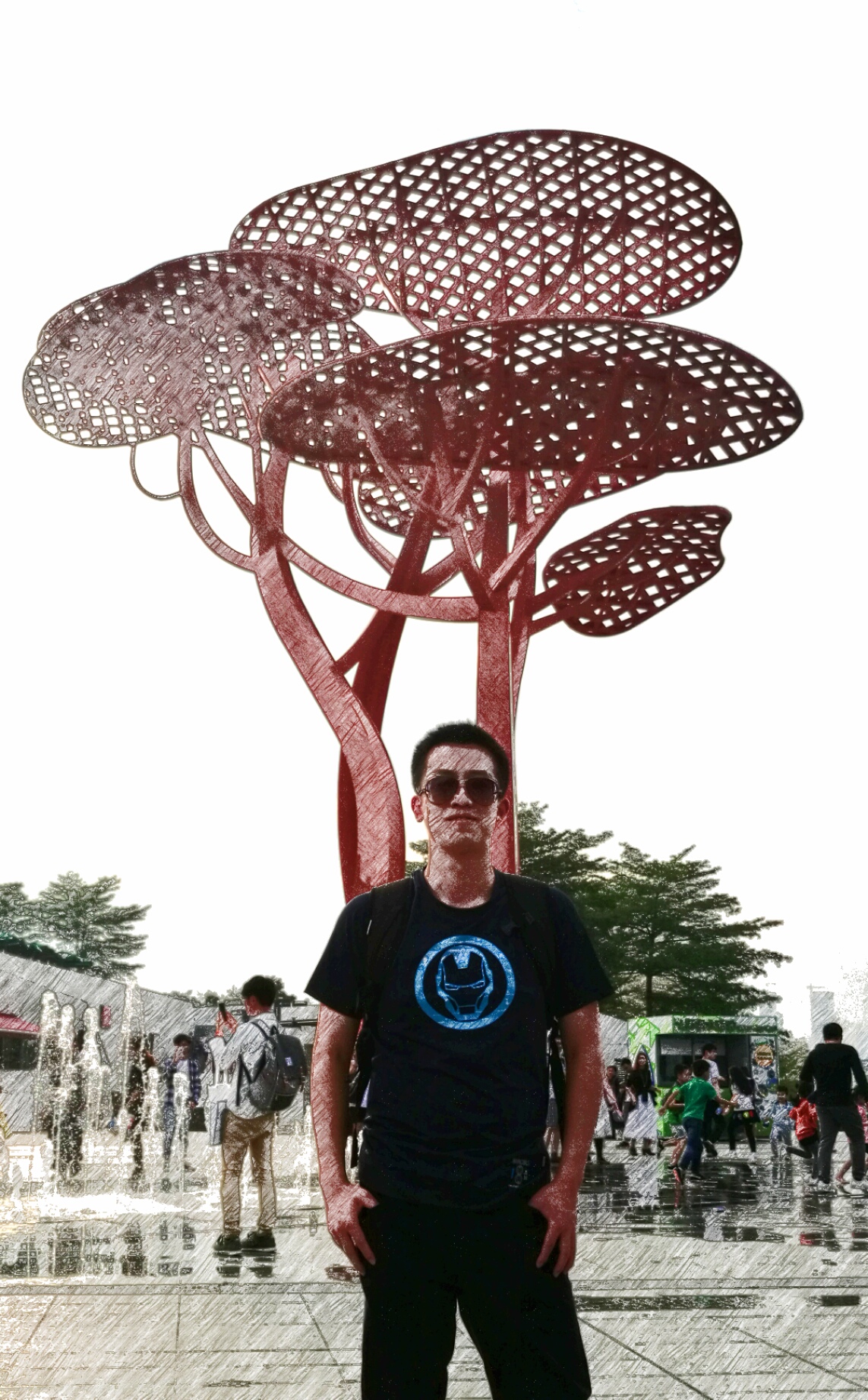Daily Workflow
Published:
Welcome to the page of Daily Workflow.
David Allen, the author of Getting things done (GTD) which is the Bible of time management, first put forward his five steps workflow:
We (1) _capture_ what has our attention; (2) _clarify_ what each item means and what to do about it; (3) _organize_ the results, which presents the options we (4) _reflect_ on, which we then choose to (5) _engage_ with.

Here, we also adopt this GTD workflow; however, G stands for GitHub.
First and foremost, the workflow should be goal-directed. Therefore the first thing to do in a day is to write down your daily objectives on Trello. Daily objectives mean what you want to achieve at the end of the day, which have to be specific, such as “inject plasmid in C.elegans”, “make the camera capture at 500 fps”, and “make fig.1 show AVA related to backward locomotion”. Sometimes we might fail to achieve the goals, it doesn’t matter, just keep working tomorrow, or maybe tackle the issue in another way.
Second, search for good references on Google and GitHub before you get the idea of how to achieve the goal. I’d like to say solutions to 90% of my problems are just sitting there if you Google the right keywords. So actually the key is to understand the question/problem well, then you get the right keywords, then you get the right answer via Google, simple as that.
Third, sometimes you may want to ask an expert for help when you’ve tried a while by yourself. You can post an issue on the GitHub where your project is or add a card on Trello when you are not at computers. Also in some cases, you did a great job, or you found an excellent protocol for doing things. You can write them down in the project’s wiki on GitHub. I believe this can help you understand/learn related concepts/procedures better.
Fourth, when you get something done (e.g., acquired some good experiment data or made progress with your code), you have to put them into corresponding folders (e.g., References, Data, Results). In this way, you organize what you get, which would force you to think about the progress of your project and save you a lot of time when you want to retrieve them in the future.
Finally, at the end of work, you should commit and push your work to GitHub and archive your daily objectives on Trello. In this way, everything related to the project can be traced in an organized way, and all contributions can be quantified.

